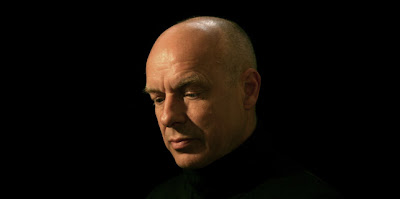The death of uncool
Brian Eno — 25th November 2009
It’s odd to think back on the time—not so long ago—when there were distinct stylistic trends, such as “this season’s colour” or “abstract expressionism” or “psychedelic music.” It seems we don’t think like that any more. There are just too many styles around, and they keep mutating too fast to assume that kind of dominance.
As an example, go into a record shop and look at the dividers used to separate music into different categories. There used to be about a dozen: rock, jazz, ethnic, and so on. Now there are almost as many dividers as there are records, and they keep proliferating. The category I had a hand in starting—ambient music—has split into a host of subcategories called things like “black ambient,” “ambient dub,” “ambient industrial,” “organic ambient” and 20 others last time I looked. A similar bifurcation has been happening in every other living musical genre (except for “classical” which remains, so far, simply “classical”), and it’s going on in painting, sculpture, cinema and dance.
We’re living in a stylistic tropics. There’s a whole generation of people able to access almost anything from almost anywhere, and they don’t have the same localised stylistic sense that my generation grew up with. It’s all alive, all “now,” in an ever-expanding present, be it Hildegard of Bingen or a Bollywood soundtrack. The idea that something is uncool because it’s old or foreign has left the collective consciousness.
I think this is good news. As people become increasingly comfortable with drawing their culture from a rich range of sources—cherry-picking whatever makes sense to them—it becomes more natural to do the same thing with their social, political and other cultural ideas. The sharing of art is a precursor to the sharing of other human experiences, for what is pleasurable in art becomes thinkable in life.
This article first appeared in the December edition of Prospect magazine


Comments
Post a Comment